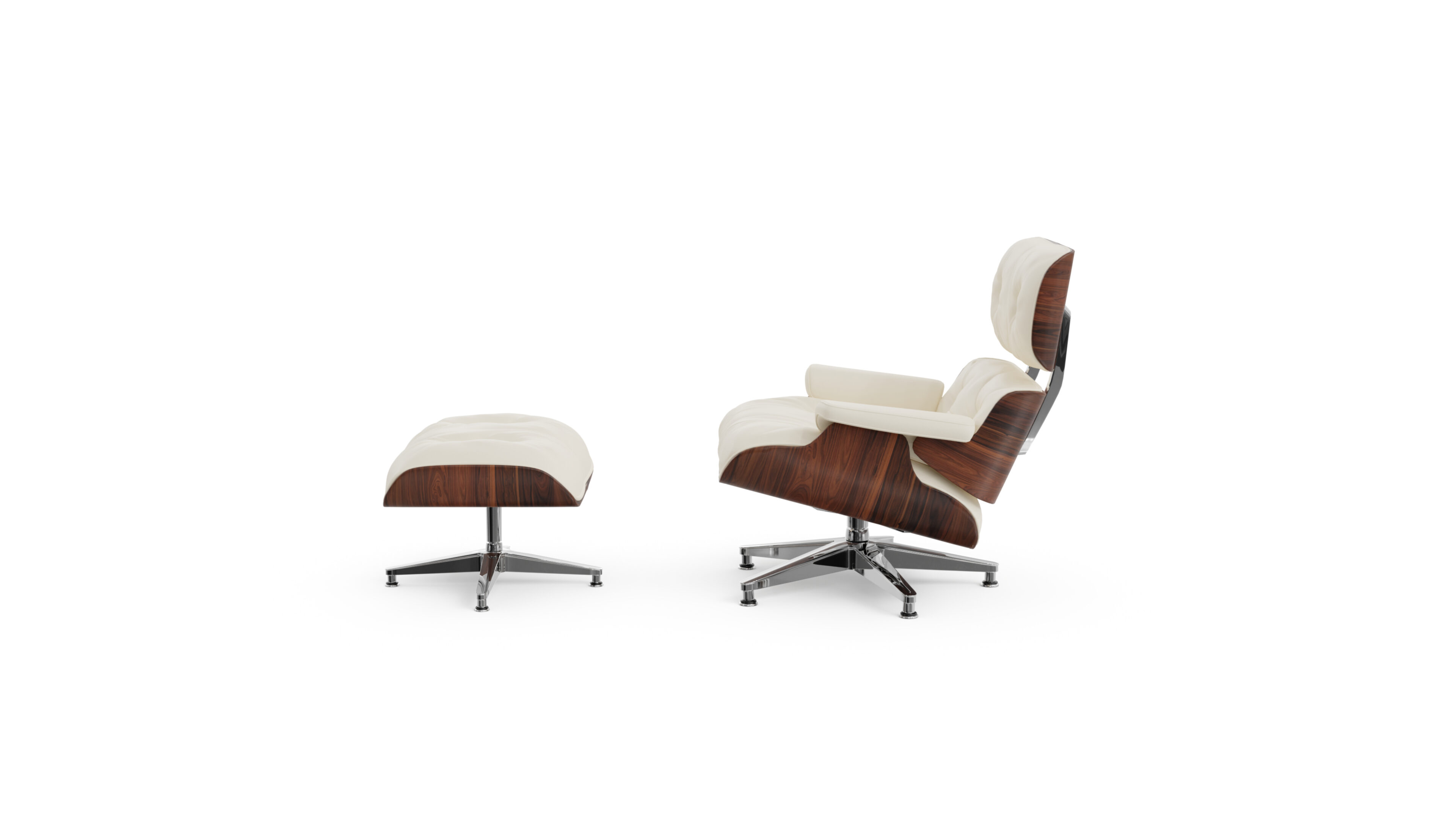
Eileen Gray Biography
Eileen Gray (1878-1976) was an Irish-born designer, architect, and leading figure in the 20th century modernist movement. Her innovative and pioneering designs have left a lasting impact on design and architecture. Gray’s work encompasses furniture, interiors, and architecture. Her designs are characterized by elegance, intelligence, and independence. They reflect an understanding of human needs and a commitment to creating functional, aesthetic, and engaging spaces. Born into an aristocratic family in Ireland, Gray moved to Paris in the early 1900s where she began her career as a lacquer artist. She later transitioned into furniture design, creating iconic pieces such as the Bibendum Chair and the Adjustable Table E1027. Her work drew from a variety of influences including the Art Nouveau style. She was known for her unconventional use of materials and forms. Gray’s career grew in the late 1920s when she began to focus on architecture. Her architectural works, including the E-1027 house and Tempe à Pailla, are celebrated for their modernist aesthetics and innovative design principles.
Early Life and Education
Eileen Gray was born Kathleen Eileen Moray in 1878. She spent her childhood in Brownswood, County Wexford, dividing her time between Ireland and London. In 1893, her mother inherited a peerage from a Scottish uncle, becoming Baroness Gray, where Eileen and her siblings adopted the surname Gray. Gray’s formal education in the arts began at the Slade School of Fine Art in 1898, where she studied drawing and painting. In 1902, Gray moved to Paris to study drawing at the Academie Julian, but she soon shifted her focus to screens and panels. She sought out Japanese lacquer master, Seizo Sugawara, who agreed to train her in the technique. Gray dedicated herself to the craft, taking a particular interest in red Negoro lacquer and maki-e techniques.
Career and Notable Works
Eileen Gray’s career spanned several decades and encompassed various fields of design. Some of her most notable works include:
1. Bibendum Chair: A unique and striking chair characterized by its large, tubular form, offering style and comfort.
2. E-1027 Adjustable Table: A functional table designed with an adjustable height feature.
3. E-1027 House: A modernist villa that deviates from typical designs of its time by adapting to its occupants through integrating moving screens with fixed walls and incorporating adjustable furniture.
4. Villa Tempe a Pailla: A villa in Castellar, France, showcasing Gray’s innovative use of space and light, with its open plan design and large windows.
5. Bonaparte Armchair: An elegant and minimal armchair combining plush upholstery with sleek lines.
Design Philosophy
Eileen Gray’s design philosophy was characterized by:
1. Human-Centered Approach: Focusing on the needs and experiences of the people who would interact with her designs.
2. Total Design: Emphasizing the integration of all elements of a design project, from architecture to interior design to furniture.
3. Rejection of Rigid Rationality: Gray rejected the “hygienic” austerity of modern architecture, believing it left houses cold and inhumane.
4. Functionality and Comfort: Prioritizing these aspects alongside visual appeal in her furniture designs.
5. Innovation: Gray was known for her unconventional use of materials and forms, often creating designs tailored to unique personal needs.
Legacy and Recognition
Eileen Gray’s legacy and recognition has declined and resurged throughout the years. Despite periods of obscurity, her innovative designs and pioneering approach have left a lasting impact on design and architecture. In recent decades, there has been a renewed appreciation for her contributions. Today, Gray’s designs are highly regarded and sought after. Her original pieces can be found in prestigious collections worldwide, including the Centre Pompidou in Paris and The Metropolitan Museum of Art in New York. Gray’s enduring influence is also notable in the record-breaking auction price achieved for her Dragon’s Armchair, which sold for $28 million in 2009, making it the most expensive chair ever sold at auction. Gray’s legacy also extends to her contributions as a lacquer artist and her involvement with the Union des Artistes Modernes (UAM). As a member of the UAM, she participated in promoting modern design and advocating for its recognition as an art form.
Eileen Gray FAQs
Why is Eileen Gray famous?
Eileen Gray is famous for her innovative and pioneering designs in furniture, interiors, and architecture. Her work reflects an understanding of human needs, a commitment to functionality, and a unique aesthetic sensibility.
What is Eileen Gray known for?
Eileen Gray is known for her iconic furniture designs, such as the Bibendum Chair, Roquebrun Chair, and E-1027 Adjustable Table. She is also recognized for her architectural projects, including the E-1027 house and Villa Tempe à Pailla. Gray’s designs are characterized by elegance, modernity, and detail.
What style is Eileen Gray?
Eileen Gray’s work can be associated with various design styles, but she is particularly known for her contributions to the modernist movement. Her designs embrace modernist principles while displaying elements of Art Nouveau and the avant-garde. Gray’s unique style combines rational geometric forms, luxurious materials, and a human-centered approach to design.
What is the significance of the E-1027 house?
The E-1027 house is one of Eileen Gray’s most significant architectural works. Designed in collaboration with Jean Badovici, it represents a departure from the prevailing architectural philosophy of its time. The house prioritizes the needs of its inhabitants, featuring innovative spatial planning, integrated furniture designs, and a harmonious integration with the surrounding environment. It exemplifies Gray’s forward-thinking approach to architecture and her holistic vision of design.




























